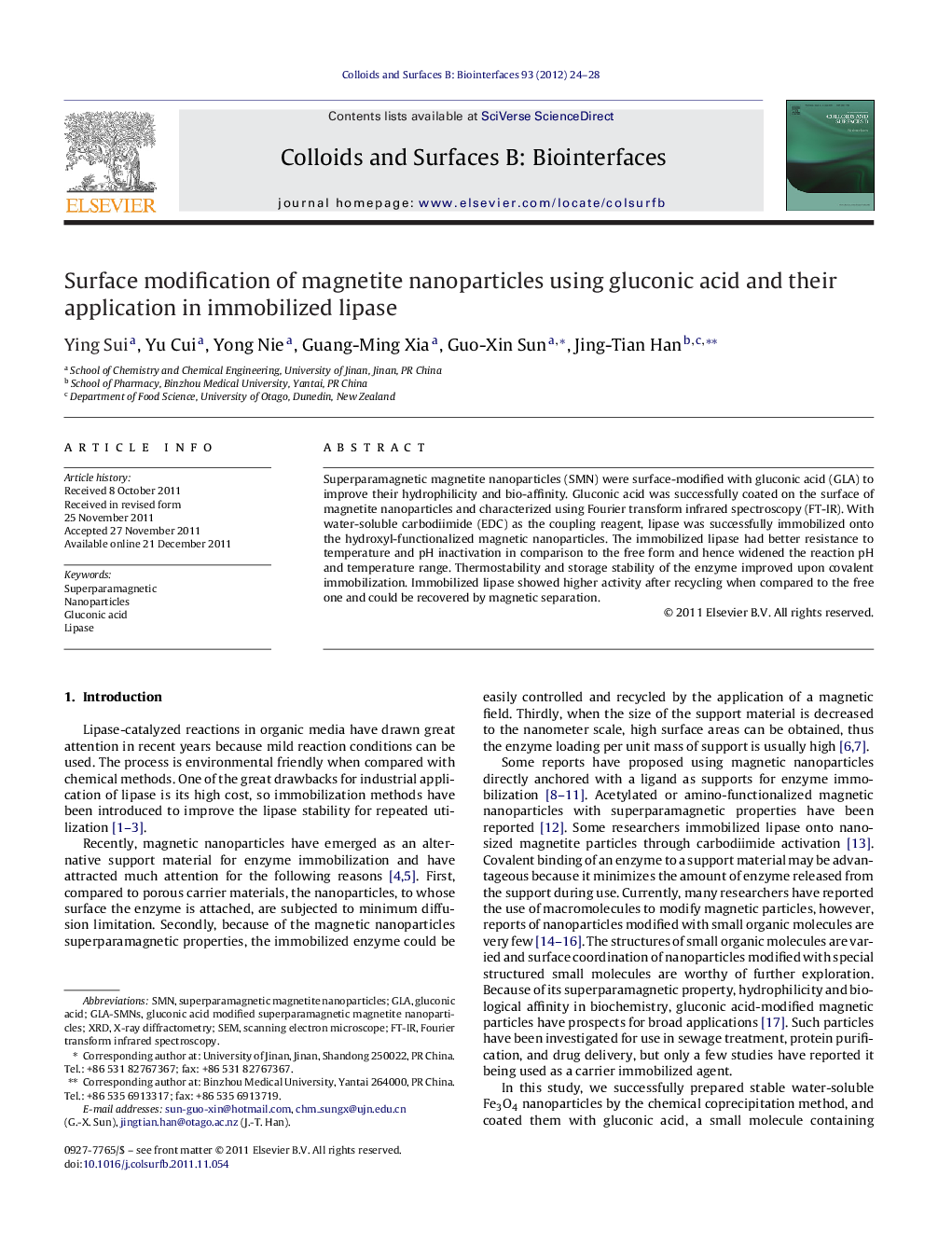| Article ID | Journal | Published Year | Pages | File Type |
|---|---|---|---|---|
| 600882 | Colloids and Surfaces B: Biointerfaces | 2012 | 5 Pages |
Superparamagnetic magnetite nanoparticles (SMN) were surface-modified with gluconic acid (GLA) to improve their hydrophilicity and bio-affinity. Gluconic acid was successfully coated on the surface of magnetite nanoparticles and characterized using Fourier transform infrared spectroscopy (FT-IR). With water-soluble carbodiimide (EDC) as the coupling reagent, lipase was successfully immobilized onto the hydroxyl-functionalized magnetic nanoparticles. The immobilized lipase had better resistance to temperature and pH inactivation in comparison to the free form and hence widened the reaction pH and temperature range. Thermostability and storage stability of the enzyme improved upon covalent immobilization. Immobilized lipase showed higher activity after recycling when compared to the free one and could be recovered by magnetic separation.
Graphical abstractFigure optionsDownload full-size imageDownload as PowerPoint slideHighlights► Magnetite nanoparticles were surface-modified with gluconic acid. ► Lipase was immobilized onto the hydroxyl-functionalized nanoparticles. ► Thermostability and storage stability of the enzyme increased up on covalent immobilization. ► Immobilized lipase showed higher activity after recycling in comparison to the free form.
